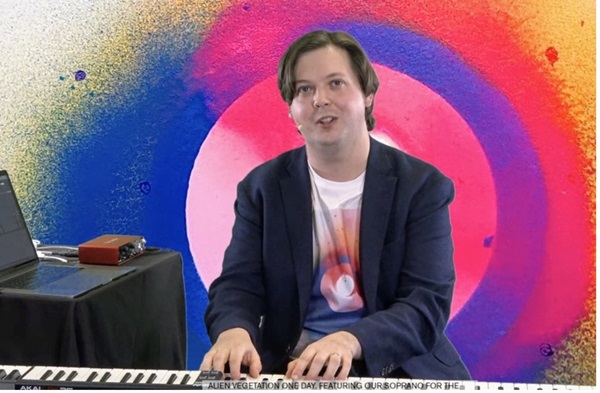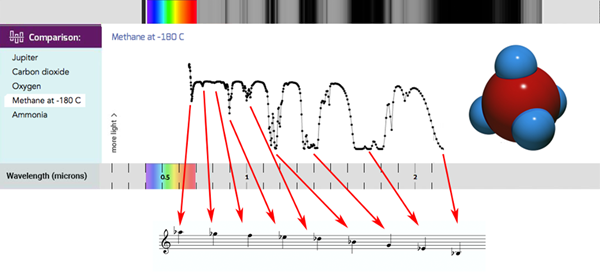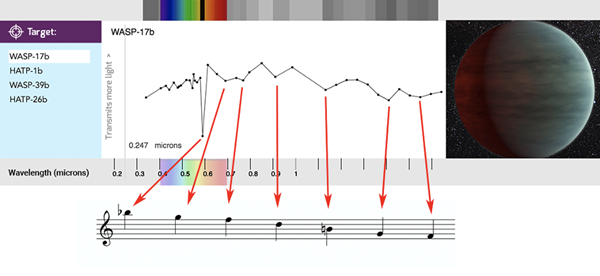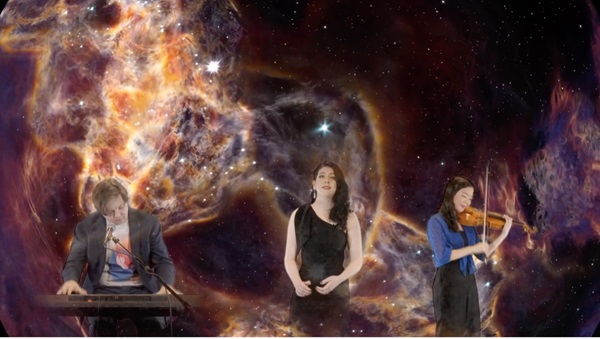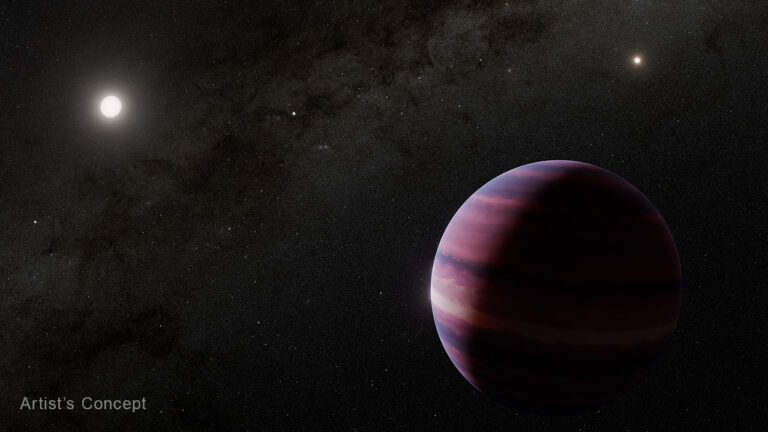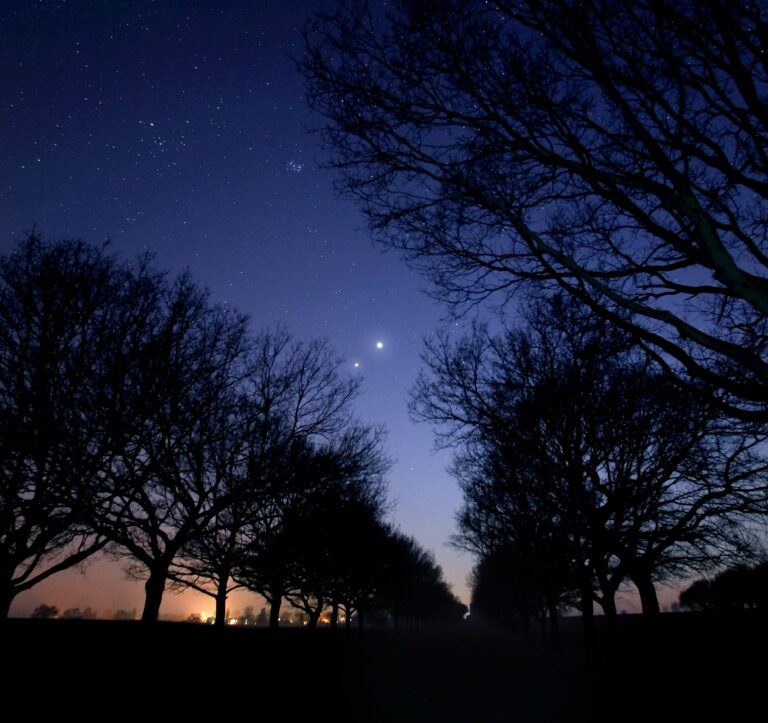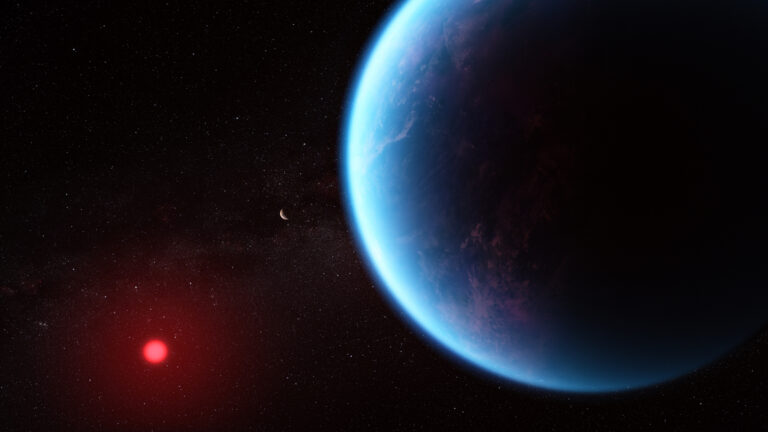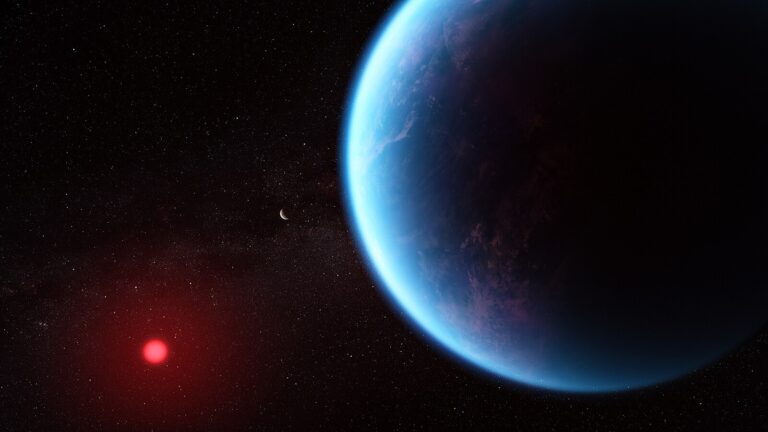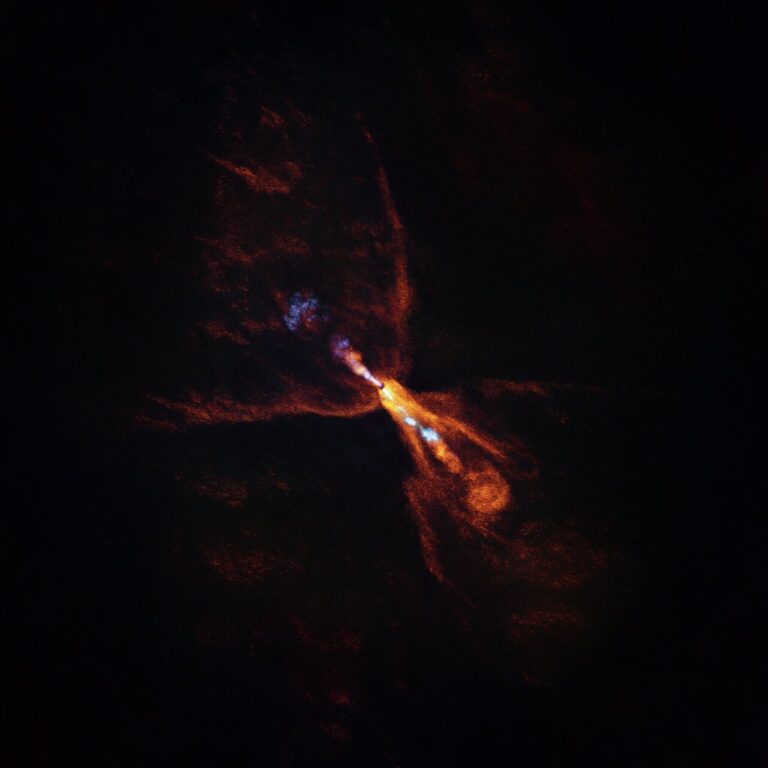Key Takeaways:
We are living in the midst of an exoplanet revolution.
When I was born, there was no evidence for the existence of planets beyond our solar system. And now? Over 4,000 have been discovered. For all of us, this is a groundbreaking moment, both scientifically and, ultimately, spiritually. For the first time in humanity’s history, we know that Earth is not alone, and that there are many Earth-like planets. Surely, some must harbor life?
In fact, in his book “A Universe in Creation,” biophysicist Roy Gould of the Harvard-Smithsonian Center for Astrophysics, argues that we live in a universe finely tuned for life — from the diversity of chemical building blocks in nature, to the abundance of fertile planets where life could take root.
As a composer, I’ve always been fascinated by science. That interest led me to found the Multiverse Concert Series — a nonprofit organization I founded that serves as a space for artists and scientists to come together and collaborate.
I recently completed one such project with Gould. As an artist, spending time with him and sharing his enthusiasm for the nuances of exoplanet science — how every day we are acquiring new knowledge of our planetary neighbors — lit a fire in my mind. The knowledge that we live in a fertile universe of planets is an undeniable source of hope and optimism for humanity, and one that is sorely needed in these times. I became driven to share this vision as powerfully as I can in my own medium of music. I challenge others to do the same in theirs.
The result of our year-long collaboration was “Octave of Light,” a concept album inspired by the search for life on exoplanets and the clues that might reveal life’s presence: chemical signatures from molecules like water vapor, methane, and oxygen.
In this article, I’ll share the journey of this project, and I invite you to listen along in the player below. We’ll explore the groundbreaking science of exoplanets, the joy of connecting astrophysics to art and music, and the narrative arc that connects atmospheric chemistry to the hunt for extraterrestrial life.
The music of exoplanets
How can music communicate exoplanet science? The connection lies in the physics of waves. Most exoplanets are detected via the transit method — as shadows moving across their parent stars. Sensitive telescopes detect minute fluctuations in the light of a distant star as a planet passes across its surface. A telescope equipped with a spectrograph can split these images into their component wavelengths across the electromagnetic spectrum. The spectrograms, courtesy of Roy Gould, come out looking like this:
Analyzing these spectrograms reveals which wavelengths of light have been absorbed by the planet’s atmosphere as it transits, resulting in a unique spectral signature that indicates its chemical makeup. Some molecules absorb light primarily in pronounced dips at just a few wavelengths, while others give rise to an intricate pattern spanning a wide range of wavelengths.
The limits of our eyes
Although these lines correspond to colors, sadly, our eyes can’t see them. First, they are mostly in the infrared and, therefore, outside of our visible range. But even when transposed — or shifted — into visible frequencies, they are spread too widely to fit within the dynamic range of our eyes. As a composer, I began wondering: If we can’t see exoplanets, could we hear them instead? Compared with the feeble one-octave range (one doubling of frequency) of our eyes, our ears can hear a massive eight to 10 octaves, or 20 to 20,000 Hertz! This is certainly an adequate range in which to fit the exoplanet data, and so I got to work.
Light can be translated into sound because, like sound, light travels as a wave. All waves have the property of wavelength, and the proportions of one wavelength to another are preserved when they are multiplied by a common number. This is how a musical piece can be transposed from one key to another without disturbing its harmonies; multiplying all of the frequencies by 2 will transpose the music up one octave.
As light wavelengths are incredibly short, they needed to be multiplied by a big number to fall within the audible range. I chose 237 — that’s 37 octaves lower than the original frequency. However, because it’s a multiple of 2, the pitch classes are preserved (although rounded to the notes of the equal temperament scale). A note with a pitch of G in the sonification is still a G in the data — just an exceedingly high one!
Sonifying molecules
I began by applying this process to the spectra of individual compounds, as measured in the lab.
Here is the first sonification I made of water vapor, a molecule which has been found in many exoplanet atmospheres:
This spectrum became Track 1 on the album, “Water Romanza”: an ode to water as the harbinger of life as we know it. At the beginning, you can hear soprano Beth Sterling singing the dips of the spectrum as the cantus firmus of the piece, joined by violinist Amelia Sie with the lyrical romanza melody.
Another molecule that crucial to exoplanet science is methane. We all know methane as a flammable gas, but its complex molecular form also allows it to be clearly identified in an exoplanet’s spectrogram. We know that methane can arise via inorganic processes on a planet, but finding methane and oxygen together could suggest the presence of life.
This is because oxygen is so reactive that it quickly combines with methane to produce carbon dioxide and water. Finding an unstable mix of both gases together means they are being continuously produced, perhaps by living things! This revelation became track 3: “Methane,” with a wordless melody for soprano tracing the arc of methane’s unique spectrum.
The sound of exoplanets
By comparing an exoplanet’s spectrum to spectra of individual molecules measured in the lab, scientists can break down the planet’s spectrum into component elements and compounds to learn the contents of its atmosphere. The 4th, 5th, and 6th notes (left to right) in the spectrum of planet WASP 17-b (below) match up to the 3rd, 4th, and 5th notes of the water vapor spectrum. Therefore, we can see — and hear harmonically — that the planet’s atmosphere contains water vapor. Not only this, but the individual dips at approximately 0.58 and 0.768 microns reveal the presence of sodium and potassium, audible respectively as B♭ and F.
This breathtaking feat of deduction at a distance of 1,300 light-years gave rise to the song Wanderers, adapted from narration by Carl Sagan in his Cosmos series. We know so much about our exoplanetary neighbors — they seem so close — and yet how frustrating that we remain earthbound!
We began as wanderers,
We are wanderers still.
We have lingered too long on the shores of the cosmic ocean.
Individual chemical clues can tell us much about a planet’s atmosphere, but what would it take to convince us that life was present on another world? Since the album was completed, an astrophysicist friend of mine, Clara Sousa-Silva of MIT, announced a project indicating the presence of phosphine gas in the atmosphere of Venus — a molecule associated with anaerobic bacteria on Earth. Could our scorching hot neighbor harbor microbial life, hidden in its clouds? The scientific debate is still ongoing. But if planned missions to our sister planet come to fruition, we may know soon.
A formula for life?
The climatic track on the album, “Equals Life,” combines these chemical clues — and their musical equivalents — into a potential recipe for life on an exoplanet. In addition, I include the red edge, which is a striking spectral feature that could indicate the presence of chlorophyll, the green pigments in plant life:
Water vapor + red edge + methane + oxygen = life?
We can see all of these clues in earthshine — the light reflected by Earth that is then reflected by the unlit side of the Moon. By analyzing the spectrum of earthshine, we can get a glimpse of how our own planet might appear from another solar system. This begs the question: If aliens knew where to look, would they know we are here? It’s an incredible thought to ponder.
Beyond these four clues, there are thousands more that astrophysicists are now searching for. Without a doubt, the exoplanet revolution will continue to astound us with tales of Earth-like chemistry on distant worlds.
And what message does our spectrum send out to those looking back? It will shine in an octave of light.
All the science that we contend
Discovered in an octave of light
All our efforts to transcend
Will shine out through the daylight
To the spectrum of our skies
The interplay of art and science
Along my artistic journey, I’ve learned that there are countless more spectral clues for life on exoplanets than the handful I’ve explored in Octave of Light. Certainly, the possible presence of phosphine on Venus seems incredibly promising for investigation. I feel that I am going to be very busy…
Earlier in the article, I challenged other artists to respond to the call and make exoplanet art. I’m thrilled to say that Polish artist Marlena Bocian Hewitt has already created a series of paintings based on the album’s tracks.
Together, artists and scientists can discover and celebrate our fortunate place in a fertile universe of planets. We are lucky to be here. This needs to be said — in as many ways as humanity has to offer.
Listen to Octave of Light performed live at Other Skies: An Exoplanetary Festival, streaming on March 20th. The event is free for students at www.otherskies.org.

